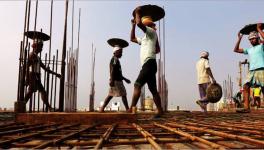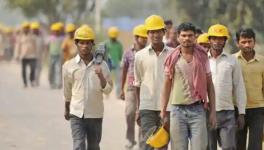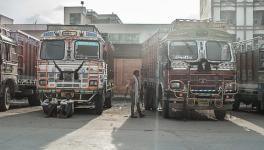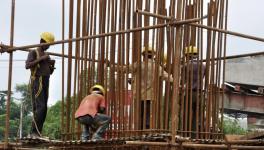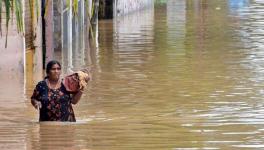India Must Account for Human and Ecological Costs of Highway Expansion
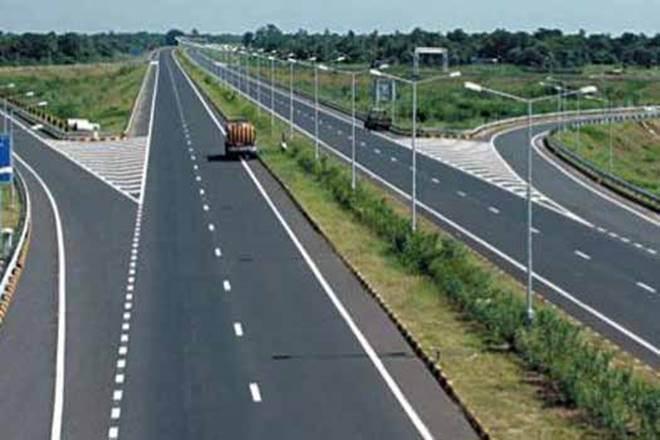
Image Courtesy: The Financial Express
Rapid highway expansion is among the priorities of the central government, evident from how the National Highways Authority of India (NHAI) budget has expanded very rapidly in recent years. The actual expenditure of the NHAI in 2020-21 was Rs. 46,062 crores. Despite severe resource constraints during the Covid-19 pandemic, the following year’s budget estimate was raised significantly to Rs. 57,730 crores. Then the government increased the revised estimate in 2020-21 to Rs. 65,060 crores.
Highways are important for economic development and boost connectivity and transportation, but there is an ecological cost to building them, especially when it is done at break-neck speed. In 2022-23, India saw the most significant increase ever in the allocation for the NHAI, an over 100% hike in the budget estimate to Rs. 1,34,015 crore in the last Union budget. It implies a very rapid expansion of highways, which means the government must make effortst to reduce their ecological and social costs.
Instead, there are shocking reports of serious harm to the environment from many parts of the country, particularly the Himalayan region, during highway construction. Little is done to recompense for those who are losing out in the process of construction. To begin with the ecological costs, according to an official reply to an RTI request in December 2020, over 1.89 lakh trees were felled for the 297-km Bundelkhand Expressway project that seeks to link Chitrakoot and Etawah in Uttar Pradesh. Progress on this project is officially around 94% complete. Yet the figures for trees cut down are underestimated, as the destroyed shrubbery and soil were not accounted for here. For the roughly 900-km Char Dham project in Uttarakhand, both large and small felled trees were counted in the first three phases. Some have concluded that over two lakh trees were lost in this process. It’s quite possible that somewhere close to this number is also threatened in this project’s remaining 100-km stretch from Uttarkashi to Gangotri. This is a highly sensitive eco-zone near the origin of the Ganga river.
Along with tree-felling, serious harm has been caused by the tendency to save construction expenses by using unscientific means to cut hills. One big culprit is the excessive use of explosives. It raises the growing number of landslide-prone sites and highway danger zones. Our planners forget that the cost of a project includes the benefits it will bring in terms of time and fuel savings. If a highway project raises the frequency of traffic disruptions, delays, and accidents, then the purpose of expansion and road-widening gets defeated over time.
The problems start with poor planning and projects cleared without consulting communities. As a result, mass-scale road widening exceeds its tolerance limits in hilly regions. Another serious lapse is the inability to make arrangements to dispose of the muck that is created during construction. This mud finds its way into rivers and hurts water flow and riverine lifeforms and raises flood risk.
The project to widen the highway from Udhampur to Banihal in Jammu and Kashmir has devastated water sources, particularly the Tawi river in the Jammu region. In Ramban, people have complained of severe breathing problems where the muck is deposited. The National Green Tribunal (NGT) constituted a monitoring committee headed by a retired senior judge, which said in October 2021, NHAI must repair the damage and provide Rs. 129 crore on the polluter-pays principle. The NGT then instructed the NHAI to strengthen its capacity to prevent and monitor environmental damage while executing projects.
It is also a fact that in India no agency computes the cost of lives lost during mega-construction projects. A landslide took place at Ramban on 21 May, at the site of an ongoing tunnel construction project as part of the project to widen (four-lane) the Jammu-Srinagar highway. Ten workers digging at the mouth of the tunnel died. According to media reports, the mouth of this tunnel and areas around have become a “death trap” even for commuters, as it is constantly affected by landslides and shooting stones.
We also forget that the cost of building highways includes the tolls that people must pay once they are completed. Recently, local residents of Sohna in Gurgaon protested against the setting up of a toll plaza on the partially-opened elevated road along the 19-km stretch. They said they want exemption from the toll tax permanently, as opposed to the temporary relief given by NHAI to locals, along with monthly discounted passes. The residents say their movements are restricted by the presence of not just one but four toll plazas in Gurgaon, which have too few exits.
People facing environmental damages, economic hardships and social costs is not new, but as more funds are poured into highway-building work, these conditions will only worsen unless there is a correction. In 2019, the 1,328-km Delhi-Mumbai Expressway passed through protected areas. It was reported that the engineers engaged in this project were “exploding and flattening entire hills” and repurposing soil to create beds for the widened highways.
People do not realise that the higher the ecological losses, the more the social costs will climb. This writer’s conversations with people living near the widened Parwanoo-Solan Highway in Himachal Pradesh revealed many had lost their homes or parts of houses, pathways and farms during heavy construction work. While compensation for the land acquired during widening is generally received, the indirect harm often remains unsettled for long or is never compensated. Roadside shops are removed to make room for the roads, and they are usually classified as encroachments, disentitled to compensation. Those with modest livelihoods tied to tourism and pilgrimages are more adversely affected. Some have formed committees and are protesting to demand justice.
Or recall the tragic story of the Telangana village along an expressway whose numerous male residents died while trying to cross it. Such problems exist across the country and arise because the costs of access roads and by-passes are high. There are always villages and towns that do not get access roads, exits or by-passes, and each situation has its own complex impact. That is why we need measures to compute and then minimise the social and environmental effects of highway development. A recent National Green Tribunal (NGT) ruling said more financial resources must get allocated to repair such damage, which is welcome. It is even more critical to have precautionary systems that avoid inflicting harm in the first place. Highway building must learn from past mistakes. Unbiased pre-project assessments and community consultations are crucial to this process. Making good use of the local community and understanding conditions is essential.
The writer is honorary convener of Campaign to Save Earth Now. His recent books include Planet in Peril and Man Over Machine. The views are personal.
Get the latest reports & analysis with people's perspective on Protests, movements & deep analytical videos, discussions of the current affairs in your Telegram app. Subscribe to NewsClick's Telegram channel & get Real-Time updates on stories, as they get published on our website.










